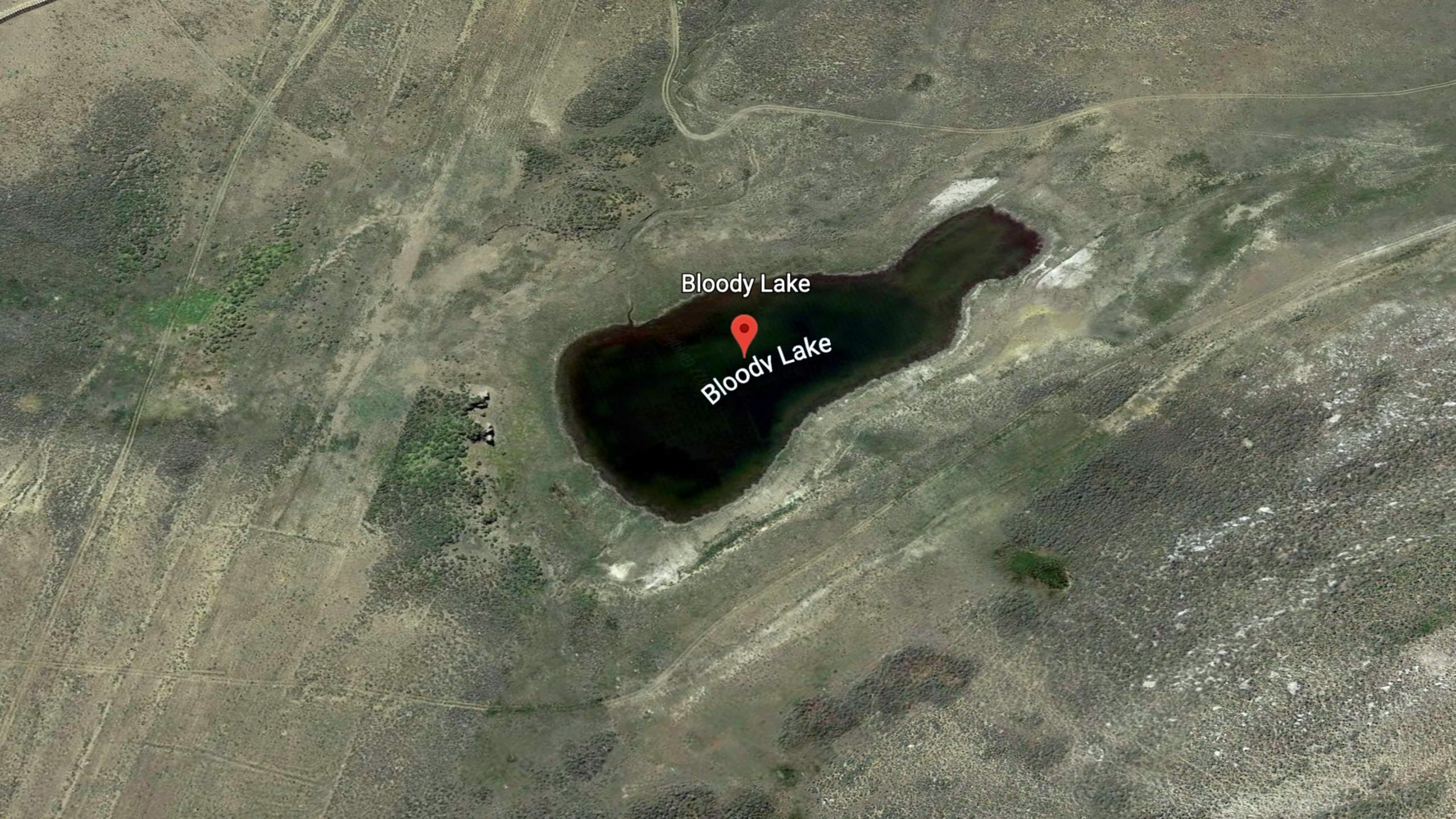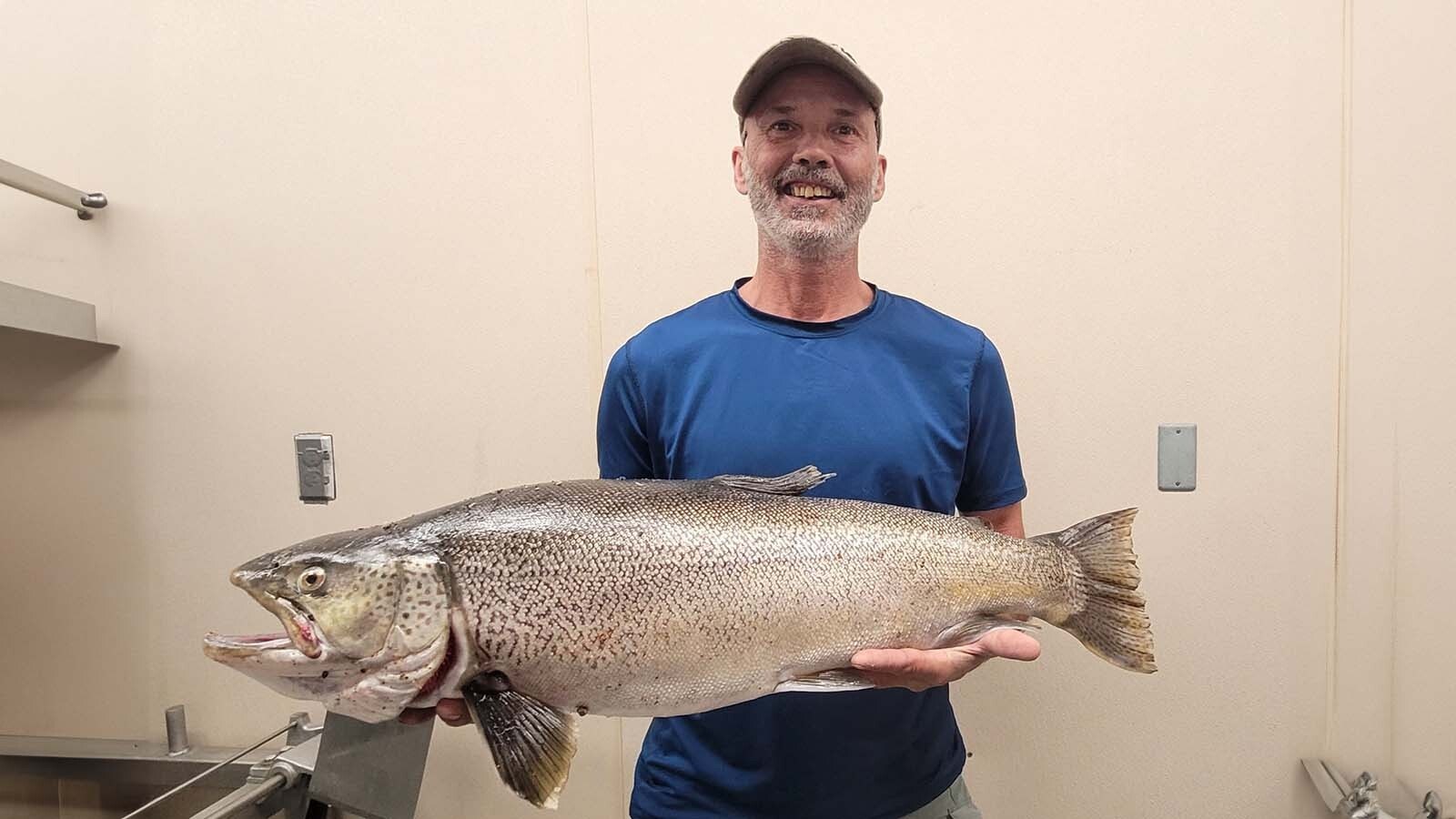Could there be a better Wyoming lake to visit in October than “Bloody Lake” in Carbon County?
Probably, but it wouldn’t have the spirit of the season behind it.
After all, the battle that gave Bloody Lake its grim name happened 154 years ago this month.
Random Body Of Water
When traveling to Wamsutter for an energy event two weeks ago, a distant body of water popped up on my car’s onboard navigation to the northwest of Elk Mountain.
By zeroing in on it, the name “Bloody Lake” appeared.
Interest arose immediately.


Bloody Lake doesn’t get much attention. The Wyoming Tourism Office hasn’t promoted it. Google results are minimal. Angler friends hadn’t heard of it.
Even the Regional Fisheries Supervisor for the Wyoming Game and Fish Department didn’t know anything about it.
“We have thousands of these types of lakes and reservoirs out here,” Bobby Compton told Cowboy State Daily on Thursday. “So, it’s really hard to know a lot about every one of them – especially those that are landlocked or private.”
Compton was referring to Wyoming’s checkerboard allotment of land where public lands can be surrounded by private, which is the case with Bloody Lake.
As a result, the department has left the lake alone for nearly 70 years.
In August 1953, 700 rainbow trout were added to the lake, but nothing since then. It’s been a ghost lake.
That’s fitting, because Bloody Lake is near a ghost town named Percy, which dried up in 1873.



Naming Of Bloody Lake
Five years earlier, John Sublette, a government scout turned construction worker turned rancher, was in the Percy area and would soon be responsible for the naming of the 2 1/2-acre lake.
According to his obituary printed in December 1928, Sublette was a participant in an “Indian uprising,” with a non-specified number of U.S. soldiers in October 1868.
The soldiers didn’t fare too well, but Sublette survived. He named the lake after the gore that discolored it that day.
“The soldiers being almost annihilated, Mr. Sublette noticed that the water of the lake was red with blood, and called it Bloody Lake, the name it still carries,” the obituary reads.
A more specific account of the battle came from Alice Willing Bloomer who, widowed after the Civil War, walked from New York to Fort Laramie with her 3-year-old son and her mother.
Bloomer was on her way to Fort Halleck, which was a military outpost near Elk Mountain, on that fateful day when she saw the battle, according to the book “Medicine Bow Valley Pioneers.”
“She witnessed a band of Indians attack a freight wagon train of five men hauling ties to Percy Station,” the account reads. “The Indians killed three of the men and two others managed to shoot their way into a ravine and escape towards Fort Halleck.
“The Indians drove the oxen into the lake and hamstrung them (cut the backs of their legs) and left them to bleed to death in the lake. They next took the mules and fled before reinforcements arrived from Fort Halleck. This was known as the Bloody Lake Massacre.”
Back To The Present



According to field data cards provided by Wyoming Game and Fish, the lake was last checked March 3, 1967.
“The lake is only 4ft in depth which would probably prevent the establishment of a year round fishery,” the report reads. “Recommend no stocking at present.”
The last entry before the 1967 report came 14 years earlier when a Game and Fish crew set up a net for 20 hours but “caught nothing.”
Although the lake was stocked regularly with cutthroat, brook and rainbow trout from 1944-53, no fish have been introduced since then and Compton believes it’s probably a dry lake.
Compton said if there was a spring source nearby it could sustain a fishery, but that’s unlikely.
“I’ve pulled up some aerial imagery,” Compton said. “And it just appears dry. I doubt there is anything in it.”
Compton was right about accessing Bloody Lake. The public can’t get there, and calls to the three landowners which border the lake were not returned.
That’s OK. The early-October drive from Cheyenne to the hills nestling Bloody Lake was magnificent. Golden leaves whispered throughout Arlington; no wind stirred on Medicine Bow River. And anyone who’s driven through Arlington knows just how rare that is.
While Bloody Lake probably won’t attract many fishermen soon, its gory history may still teem in the imagination, in curious minds for generations to come.





